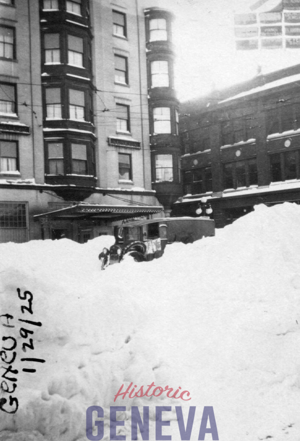bmy88 login account register
 bmy88 login account register
Trump taps Rollins as agriculture chief, completing proposed slate of Cabinet secretaries
bmy88 login account register
Trump taps Rollins as agriculture chief, completing proposed slate of Cabinet secretaries
These Black Friday TV deals are still going strongUSCIS announces revised Form I-129 for foreign workers on H-1B, L-1 or 0-1 visa
New research offers a clearer picture of a fault line hundreds of kilometres long off the West Coast that is predicted to generate a major earthquake and tsunami commonly known as "The Big One." The study confirms that the northern part of the fault, close to Vancouver Island and Washington state, is most likely to produce a major earthquake. "It's giving us the first really detailed look at this huge megathrust fault that we've long known about but haven't had any details about," Edwin Nissen, a University of Victoria earth and ocean science researcher who was not involved in the research into the fault line where two tectonic plates meet. The research, recently published in the prestigious journal Science Advances, produced the most detailed picture researchers have yet had of the fault zone spanning more than 900 kilometres from northern California to Vancouver Island — imaging they say helps them understand the magnitude and probability of earthquakes. WATCH | Where 'The Big One' could strike off Vancouver Island: Clearer picture of B.C.’s ‘big one’ emerges — and it’s not good 7 months ago Duration 2:07 A new study of the Cascadia subduction zone from California to Vancouver Island reveals the smoother, flatter fault line off the B.C. coast that will one day cause a violent, extremely damaging earthquake and massive tsunami. Subduction zones are regions where two tectonic plates collide — one plate sliding under the other toward the Earth's mantle. In the Cascadia Subduction Zone, the Juan de Fuca tectonic plate is slowly sliding underneath the North American plate. Most of the time, the plates are locked in place, pushing against each other and building stress. Once every several hundred years or so, they generate a major megathrust earthquake and large tsunami. According to Suzanne Carbotte, the study's lead author and Columbia University marine geophysicist, many subduction zones produce small earthquakes. These help researchers understand the faults and fragmentations deep in the Earth. However, in the Cascadia zone, where these earthquakes aren't common, researchers didn't have that information. Suzanne Carbotte, lead author and Columbia University marine geophysicist, published the research in Science Advances last week. (CBC News) About 50 researchers and crew took to the water on a ship that traced the Cascadia fault line. The ship was equipped with sophisticated imaging technology, which Nissen said is usually used by oil and gas companies for exploration. "Most academic scientists don't have the kind of money these companies have," Nissen said. "To get this kind of data for a purely scientific purpose is really exciting." Researchers sent low-frequency sound pulses into the fault. A 15-kilometre-long receiver, towed behind the boat equipped with hydrophones, picked up the resulting echoes. With this information, researchers created high-resolution images. WATCH: It's inevitable. A big earthquake is coming: Earthquakes: "The Big One" is coming 10 years ago Duration 2:33 Why it's inevitable B.C. will have a big earthquake They found the surface where the Juan de Fuca and North American plates interlock is much more complex and jagged than they had previously mapped. Kelin Wang, a researcher with the Geological Survey of Canada and adjunct professor at the University of Victoria who was not involved in the research, said a survey of this scale hasn't been conducted before. He said it helps explain historical earthquakes near the northern Pacific Ocean, such as the one that hit North America and the resulting tsunami that reached Japan in 1700. "In a couple of years, we'll know a lot more about this system if we begin to model earthquakes and incorporate this information," he said. How Metro Vancouver is earthquake-proofing its water reservoirs in preparation for the 'Big One' Earthquake 'swarm' strikes off B.C. coast, but no sign of the 'Big One' While it's not possible to actually predict earthquakes, Carbotte said the information will help hazard-researchers understand the probabilities of earthquakes and tsunamis. Those models can inform building codes and tsunami evacuation plans to protect coastal populations. "The probabilities are high that we're going to see a megathrust earthquake in the [Pacific Northwest] in the next 100 years," Carbotte said. "[This research] does very much inform the hazard and resilience mitigation efforts."Every Black Friday, there’s a number of viral products that everyone has on their Christmas wish list, and we don’t expect this year to be any different. However, not all of these popular items are going to stay in stock, and we have some insight on the ones that won’t. Black Friday is big business, and last year shoppers spent $222.1 billion during the entire holiday shopping season, according to Queue-it. Sales on Black Friday reached $16.4 billion (online and in stores), and this was a 9% increase from the year before. While it comes as no surprise that electronics are the most sought-after products of the holiday season, Queue-it said this accounts for the majority of holiday sales, jumping to $50.8 billion in 2023. Apparel, furniture, groceries and toys are the other hot sellers of Black Friday. Together, these five categories accounted for 65% of sales during the holidays last year and is only expected to grow in 2024. While many items that sell out over Black Friday are driven by a good deal, we also know that a hot product is just that — a gift that most people want to open on Christmas Day. So, here are our picks for the top 10 hot-ticket items that could sell out over Black Friday. Samsung 98-inch QLED TV The holidays are ripe for TV deals, and we expect shoppers to buy a ton of them in 2024, especially at Walmart. Consumers are trending toward bigger TVs and the super low-price deals over Black Friday force many models to sell out. This is especially true of popular models from Samsung, Hisense, LG and more favorites. Apple Watch Series 9 Apple's smartwatches are a top pick among Apple fans. We’ve seen prices on the Apple Watch continue to trend downward, which was only spurred by the release of the new Apple Watch 10 in September. This pushed down prices on earlier models, with the best deals coming on the Apple Watch SE and Apple Watch 9. For Black Friday, we think the prices will drop even lower and sell out due to high demand. Beats Solo3 Wireless headphones are one of the most popular products of 2024, and Beats are one of the top brands. We’re already seeing big markdowns on Beats Wireless Headphones, and we expect these price drops to continue into Black Friday. The Beats Solo3 is likely to be on sale for even cheaper than we’ve already seen, and we think they will sell out for Black Friday, with the possibility of other popular Beats headphones joining them. Apple AirPods (3rd gen) If you haven’t picked up a pair of Apple AirPods yet, this could be your year to do it. With Apple launching a fourth generation of AirPods earlier this year, the price on prevvious models are creeping lower. We think over Black Friday they’ll be at their cheapest price ever, with the AirPods (3rd Gen) likely to sell out. JBL Flip 6 Bluetooth speakers are a must-have for many this year, and with the big sound that comes from JBL’s speakers, it’s easy to see why they might sell out for Black Friday. These popular speakers come in a variety of portable sizes and waterproof designs. We expect big deals on JBL’s top-rated Clip 5 and Flip 6 Bluetooth speaker models. Apple iPad (10th Gen) One of Apple’s most sought-after products of the year was the iPad, and we saw the 9th Gen and 10th Gen models drop to their lowest prices ever. We think this year will bring some iPad bliss with even better discounts, but these deals will disappear just as fast as they arrive. We think that mega discounts on the iPad (9th Gen) and iPad (10th Gen) could cause sell outs, especially on Amazon. Dyson Airwrap The Dyson Airwrap just might be the top product of Black Friday, as this is one of the rare times there’s a discount on the beloved hair styling tool. At $600, the Airwrap carries a hefty price tag, so any discount presented is a welcome surprise. But as we’ve seen in the past, any Black Friday deal on the Dyson Airwrap causes a crush of interest that’s followed by a sell out. Ugg Tasman slippers If you’ve tried to scoop up the UGG Tasman Slippers in previous years, you already know they never stay in stock for long. As the “it” slipper of the holiday season, UGG’s Tasman sells out multiple times over the holidays, even without a discount offered. We think that this year will be similar, with popular sizes and colors of the Tasman Slipper snatched up fast over Black Friday. Bissell Little Green The Bissell Little Green carpet cleaner is a popular home product that just can’t seem to stay in stock. With prices falling under $90, this mighty machine can be a blessing for pet owners and parents, as its compact size makes it easy to store and use when needed. We’ve seen the Little Green Machine sell out before, and we’d be surprised if it didn’t do it again over Black Friday. Furby Galaxy Edition We’d be remiss if we didn’t include a top toy that we think will be hard to find and gift this year. Our pick is the Furby Galaxy Edition. This glow-in-the-dark Furby is based on the original Furby from the late ’90s with even more features, interactive modes and more fun. Making a comeback in 2023, we saw the revival of this popular toy sell out last year, and we expect the new Furby Galaxy Edition to do the same. For the holidays: Get inspiring home and gift ideas – sign up now!
WASHINGTON (AP) — A lead organization monitoring for food crises around the world withdrew a new report this week warning of imminent famine in north Gaza under what it called Israel's “near-total blockade,” after the U.S. asked for its retraction, U.S. officials told the Associated Press. The move follows public criticism of the report from the U.S. ambassador to Israel. The rare public dispute drew accusations from prominent aid and human-rights figures that the work of the U.S.-funded Famine Early Warning System Network , meant to reflect the opinion of unbiased international experts, has been tainted by politics. A declaration of famine would be a great embarrassment for Israel, which has insisted that its 15-month war in Gaza is aimed against the Hamas militant group and not against its civilian population. U.S. ambassador to Israel Jacob Lew earlier this week called the warning by the internationally recognized group inaccurate and “irresponsible ." Lew and the U.S. Agency for International Development, which funds the monitoring group, both said the findings failed to properly account for rapidly changing circumstances in north Gaza. Humanitarian and human rights officials expressed fear of U.S. political interference in the world's monitoring system for famines. The U.S. Embassy in Israel and the State Department declined comment. FEWS officials did not respond to questions. “We work day and night with the U.N. and our Israeli partners to meet humanitarian needs — which are great — and relying on inaccurate data is irresponsible,” Lew said Tuesday. USAID confirmed to the AP that it had asked the famine-monitoring organization to withdraw its stepped-up warning issued in a report dated Monday. The report did not appear among the top updates on the group's website Thursday, but the link to it remained active . The dispute points in part to the difficulty of assessing the extent of starvation in largely isolated northern Gaza. Thousands in recent weeks have fled an intensified Israeli military crackdown that aid groups say has allowed delivery of only a dozen trucks of food and water since roughly October. FEWS Net said in its withdrawn report that unless Israel changes its policy, it expects the number of people dying of starvation and related ailments in north Gaza to reach between two and 15 per day sometime between January and March. The internationally recognized mortality threshold for famine is two or more deaths a day per 10,000 people. FEWS was created by the U.S. development agency in the 1980s and is still funded by it. But it is intended to provide independent, neutral and data-driven assessments of hunger crises, including in war zones. Its findings help guide decisions on aid by the U.S. and other governments and agencies around the world. A spokesman for Israel's foreign ministry, Oren Marmorstein, welcomed the U.S. ambassador's public challenge of the famine warning. “FEWS NET - Stop spreading these lies!” Marmorstein said on X . In challenging the findings publicly, the U.S. ambassador "leveraged his political power to undermine the work of this expert agency,” said Scott Paul, a senior manager at the Oxfam America humanitarian nonprofit. Paul stressed that he was not weighing in on the accuracy of the data or methodology of the report. “The whole point of creating FEWS is to have a group of experts make assessments about imminent famine that are untainted by political considerations,” said Kenneth Roth, former executive director of Human Rights Watch and now a visiting professor in international affairs at Princeton University . “It sure looks like USAID is allowing political considerations -- the Biden administration’s worry about funding Israel’s starvation strategy -- to interfere." Israel says it has been operating in recent months against Hamas militants still active in northern Gaza. It says the vast majority of the area’s residents have fled and relocated to Gaza City, where most aid destined for the north is delivered. But some critics, including a former defense minister, have accused Israel of carrying out ethnic cleansing in Gaza’s far north, near the Israeli border. North Gaza has been one of the areas hardest-hit by fighting and Israel’s restrictions on aid throughout its war with Hamas militants. Global famine monitors and U.N. and U.S. officials have warned repeatedly of the imminent risk of malnutrition and deaths from starvation hitting famine levels. International officials say Israel last summer increased the amount of aid it was admitting there, under U.S. pressure. The U.S. and U.N. have said Gaza’s people as a whole need between 350 and 500 trucks a day of food and other vital needs. But the U.N. and aid groups say Israel recently has again blocked almost all aid to that part of Gaza. Cindy McCain , the American head of the U.N. World Food Program, previously called for political pressure to get food flowing to Palestinians there. Israel says it places no restrictions on aid entering Gaza and that hundreds of truckloads of goods are piled up at Gaza’s crossings and accused international aid agencies of failing to deliver the supplies. The U.N. and other aid groups say ongoing combat, looting and insufficient security by Israeli troops make it impossible to deliver aid effectively. Lew, the U.S. ambassador, said the famine warning was based on “outdated and inaccurate” data. He pointed to uncertainty over how many of the 65,000-75,000 people remaining in northern Gaza had fled in recent weeks, saying that skewed the findings. FEWS said in its report that its famine assessment holds even if as few as 10,000 people remain. USAID in its statement to AP said it had reviewed the report before it became public, and noted “discrepancies” in population estimates and some other data. The U.S. agency had asked the famine warning group to address those uncertainties and be clear in its final report to reflect how those uncertainties affected its predictions of famine, it said. “This was relayed before Ambassador Lew’s statement,” USAID said in a statement. “FEWS NET did not resolve any of these concerns and published in spite of these technical comments and a request for substantive engagement before publication. As such, USAID asked to retract the report.” Roth criticized the U.S. challenge of the report in light of the gravity of the crisis there. “This quibbling over the number of people desperate for food seems a politicized diversion from the fact that the Israeli government is blocking virtually all food from getting in,” he said, adding that “the Biden administration seems to be closing its eyes to that reality, but putting its head in the sand won’t feed anyone.” The U.S., Israel’s main backer, provided a record amount of military support in the first year of the war. At the same time, the Biden administration repeatedly urged Israel to allow more access to aid deliveries in Gaza overall, and warned that failing to do so could trigger U.S. restrictions on military support. The administration recently said Israel was making improvements and declined to carry out its threat of restrictions. Military support for Israel’s war in Gaza is politically charged in the U.S., with Republicans and some Democrats staunchly opposed any effort to limit U.S. support over the suffering of Palestinian civilians trapped in the conflict. The Biden administration’s reluctance to do more to press Israel for improved treatment of civilians undercut support for Democrats in last month’s elections. Sam Mednick and Josef Federman in Jerusalem contributed to this report.
- Previous: bmy88.con
- Next: bmy888 net index php




